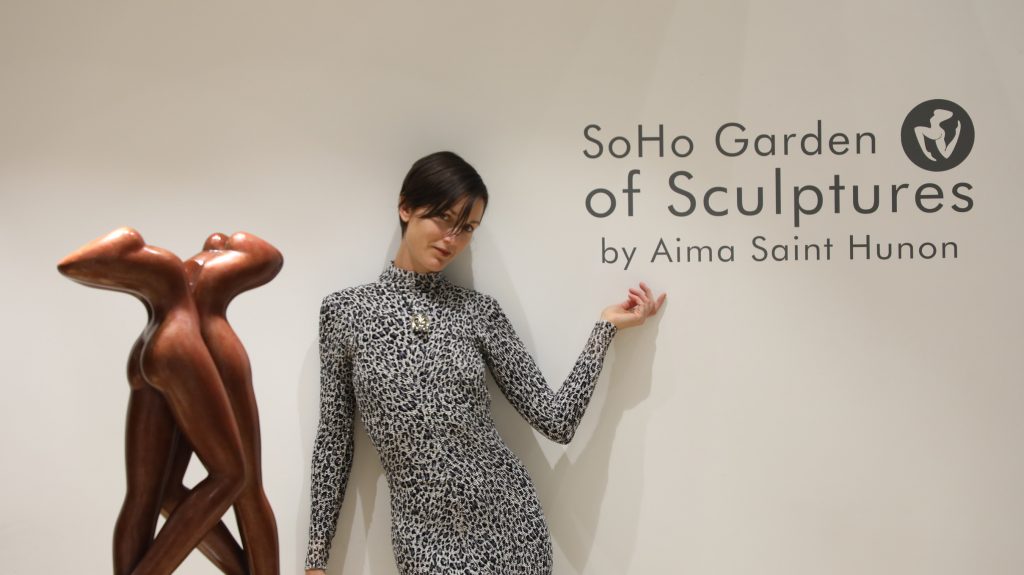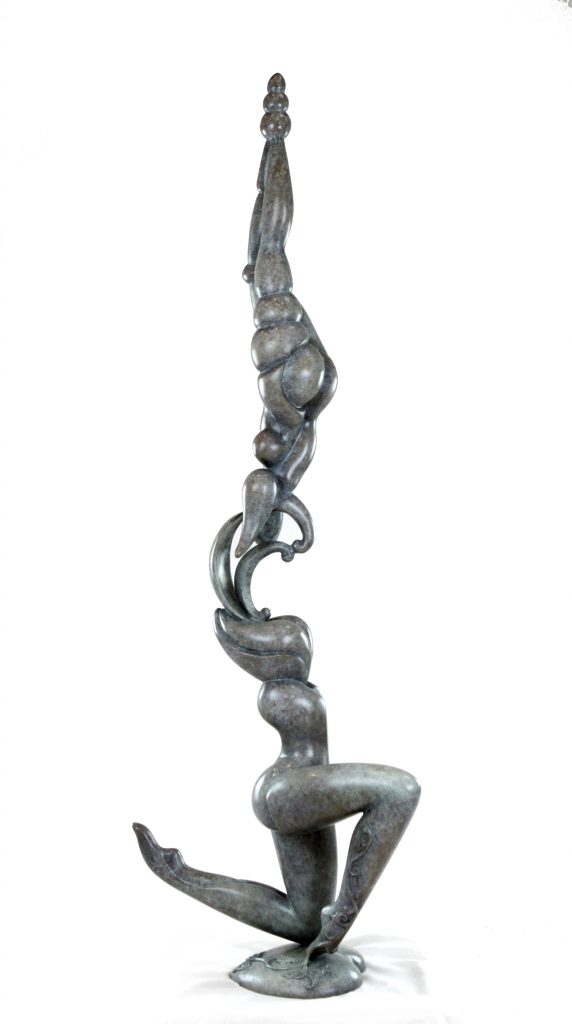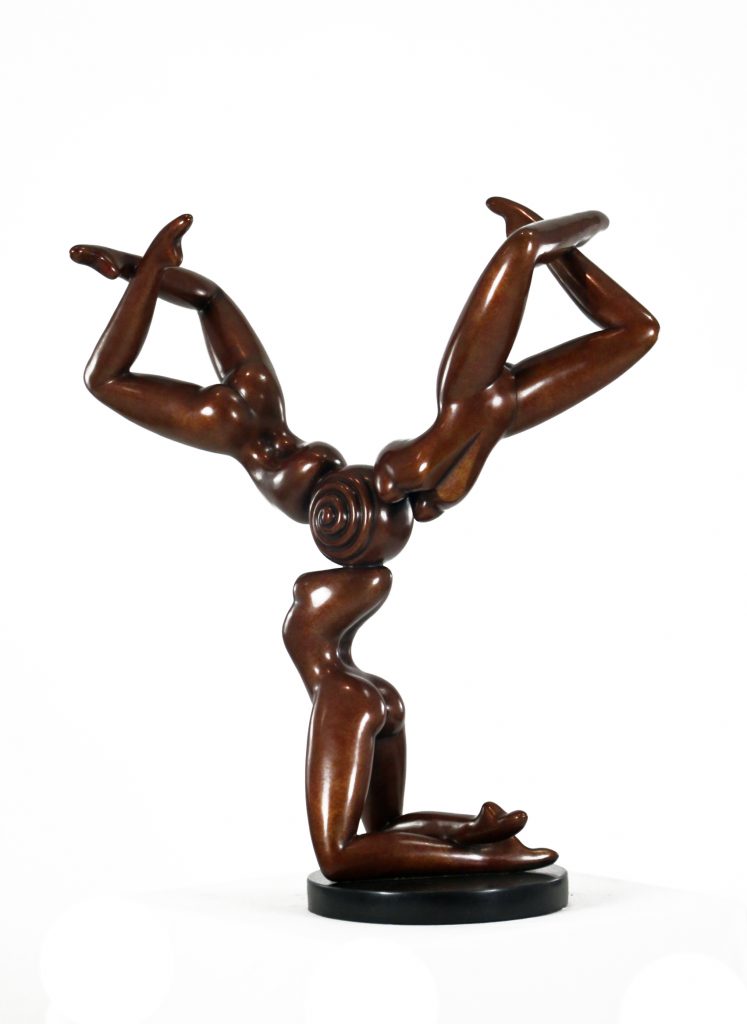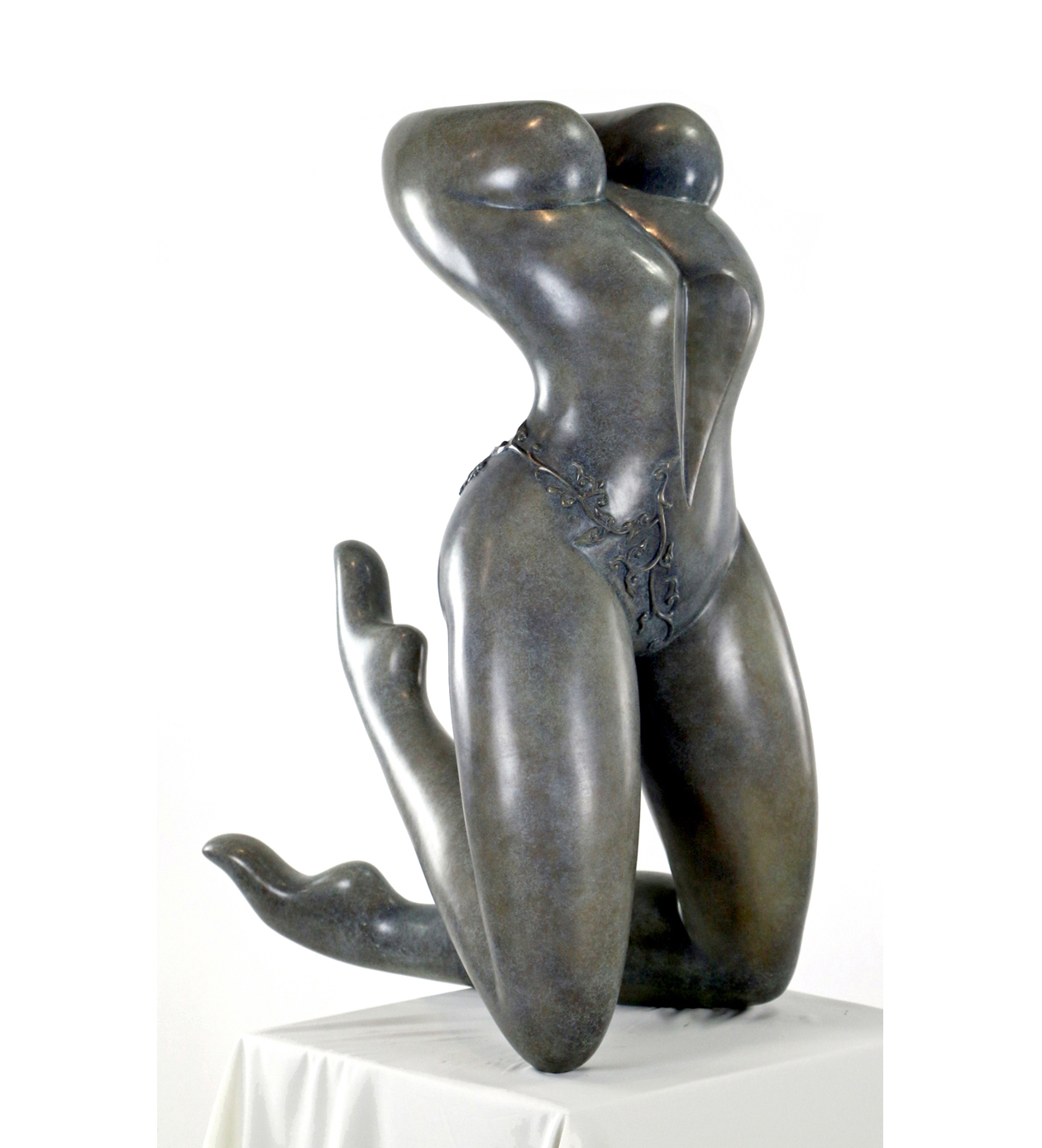BY STEPHEN DiLAURO | The inaugural exhibit at the new Maxdi Gallery, at 412 West Broadway, is on display through Feb. 12. It is a selection of bronze sculptures by Aima Saint Hunon.
She is a Parisian by birth and a cosmopolite by nature. Her work has found audiences and collectors around the world. In the current gallery exhibition, Saint Hunon’s work displays a fascination with the universality and sensuality of the human female form, without eroticizing it.
Smooth surfaces and flowing lines are hallmarks of her pieces. The smoothness extends to an absence of nipples. It is a fascinating approach.
Meanwhile, upstairs at Maxdi Gallery, the world of NFTs is expanding. Recently, I wrote a piece in which I compared NFTs to Ponzi schemes. Mahdi Hagzadeh, the founder of the Maxdi Gallery, and his collaborator, Flavia Sparacino, set me straight about NFTs. Sparacino is formerly one of the “whiz kids” at the M.I.T. Media Lab.

Hagzadeh and Sparacino are developing ways for traditional artists to explore the process of making NFTs. They are also planning a series of in-person and online seminars that will explain the process, purpose and advantages of NFTs for artists and collectors. From what I learned from these two visionaries, NFTs are here to stay and have opened up a whole new avenue in the art world.
Though it’s all more than a little technical, I gained a basic knowledge, thanks to Hagzadeh and Sparacino. (Stay tuned for an upcoming article in which I discuss creating my own NFT, with a whole lot of help, incorporating an animation of one of my stories from my award-winning public radio series “River Tales.”) Now I’m excited about the technology.
With a Ph.D. in microwave engineering from the University of Massachusetts Lowell, Hagzadeh has pivoted his life and entrepreneurial energy to the evolution of the concept of flow first described by the late Mihaly Csikszentmihalyi in his 1990 groundbreaking book.
Hagzadeh’s vision of flow revolves around purpose, joy and love at the internal level and physical space, art and technology as pillars for the Maxdi brand. Maxdi Inc.’s mission is to help people find flow in their life and at work.

Hagzadeh has already displayed his eminent good taste by inaugurating a new Soho gallery with Saint Hunon’s sculpture.
Saint Hunon is a multitalented artist. In addition to her background and training as a sculptor, she was trained as a classical French actor, appearing on stage in the works of Moliere, Racine, Victor Hugo and Edmond Rostand, among others. These days she often incorporates her performance poetry and dance as elements of exhibitions.
The sculptor is the subject of a documentary by Tope Idowu titled “A Journey into Sensuality.” This past summer a small dance troupe joined her at the Southampton Arts Center for another solo exhibition which incorporated performance as part of the experience.

Before relocating to her current studio in a brownstone in the historic Sugar Hill section of Harlem, Saint Hunon was resident in China, where a gallery set her up with a studio, connections to a foundry to cast in bronze and an exhibition.
The artist considers herself something of a spiritual heir to Camille Claudel, the French sculptress who was one of Rodin’s discarded lovers, and who was ignored almost universally throughout the art world, until after her death.
“Camille Claudel gave me the inspiration and strength to keep going,” says Saint Hunon. “Now women artists are gaining in the art world, though it is still very much a man’s world. There should be more of a balance of power. Then the world will have more harmony.”
The balance of harmony and sensuality between the sexes is very much a theme in a new series the sculptor allowed this reporter to view on a recent studio visit. There maquettes are nearing completion in anticipation of sending them to a foundry to be cast.
“These pieces show the sacred masculine and the sacred feminine,” Saint Hunon explains of the intertwined figures. “The world has to have more beauty. It’s important to me, as an artist, that my works supports positivity through the idea of beauty, balance and harmony.”
For further info about Aima Saint Hunon, click here.
DiLauro is a playwright, critic and musician.


Be First to Comment